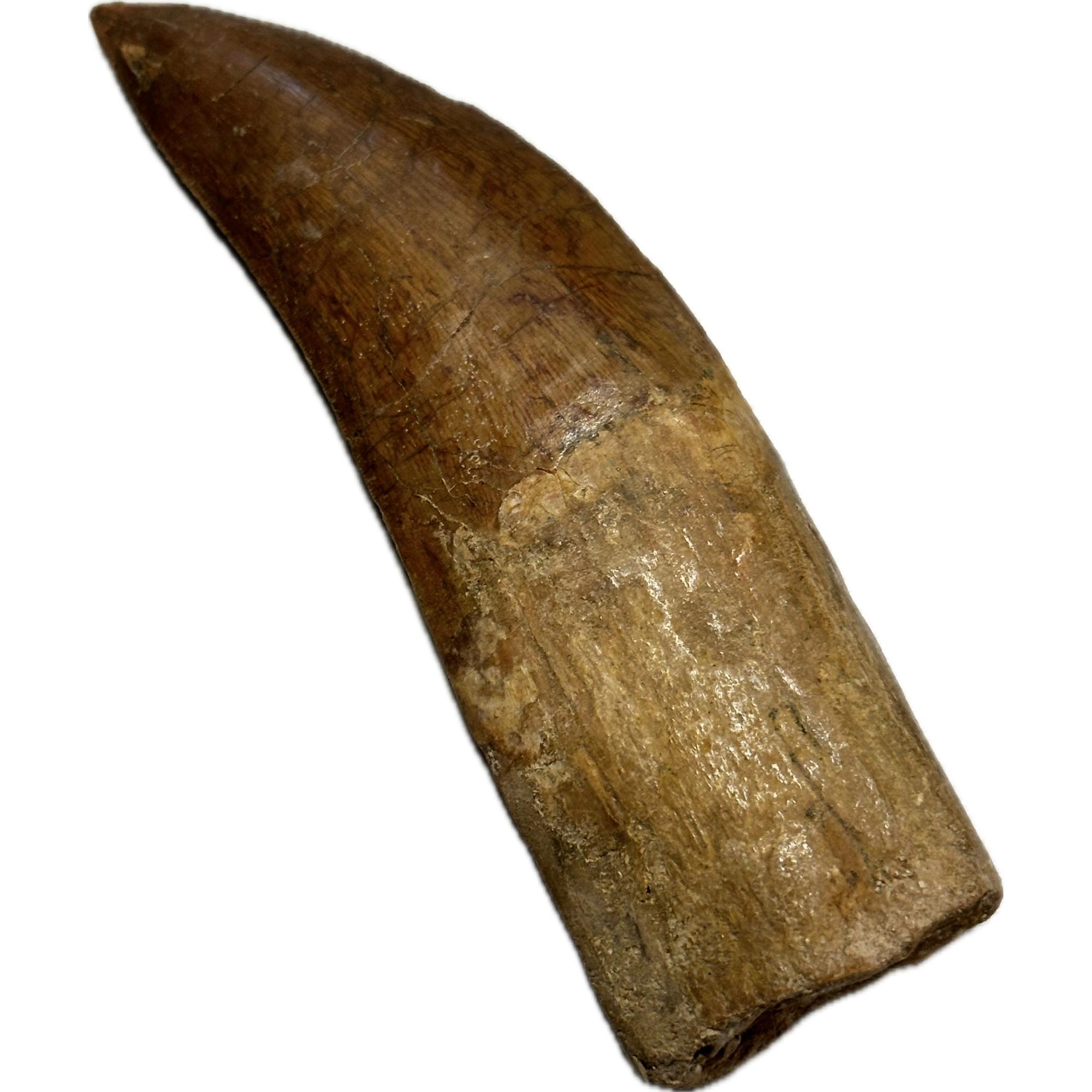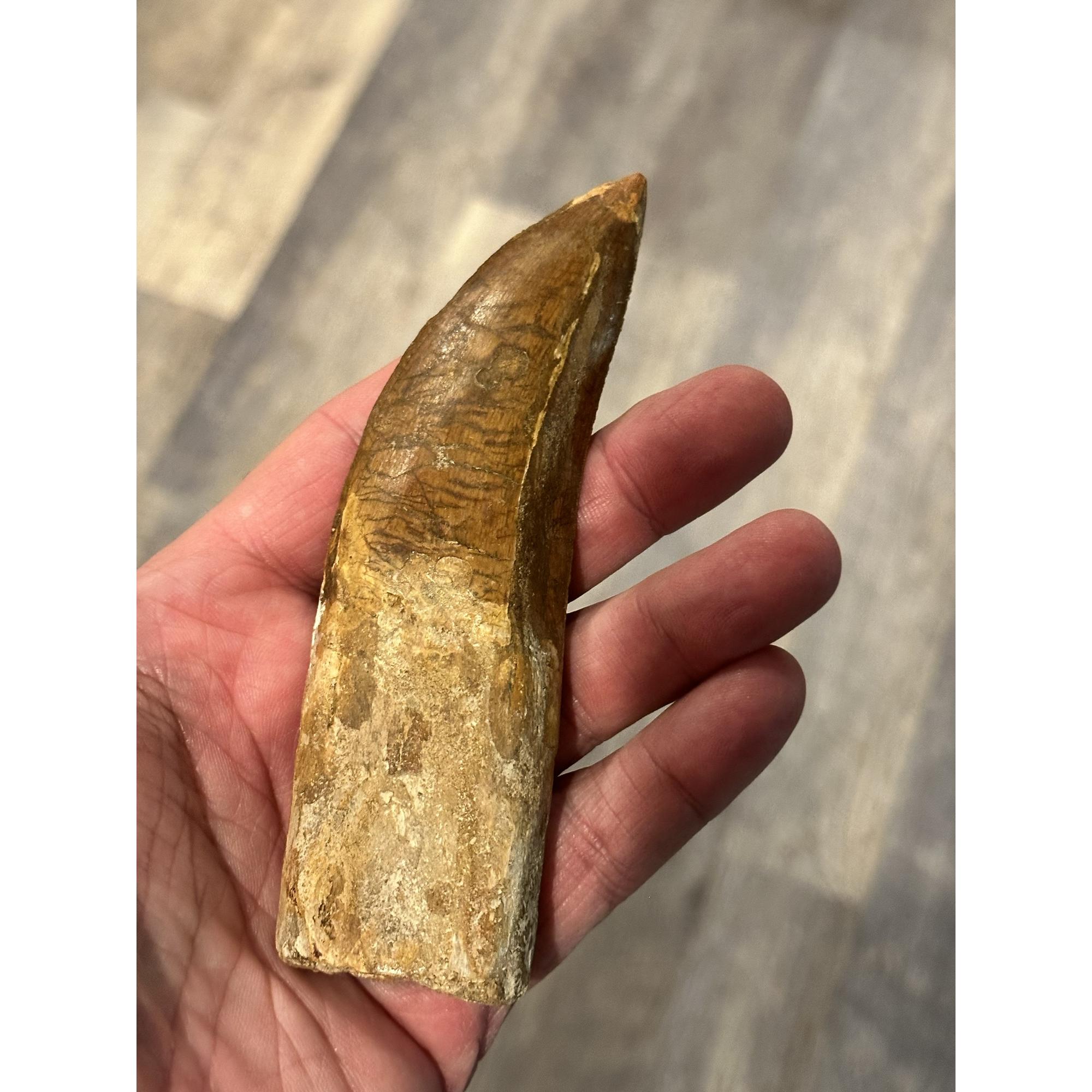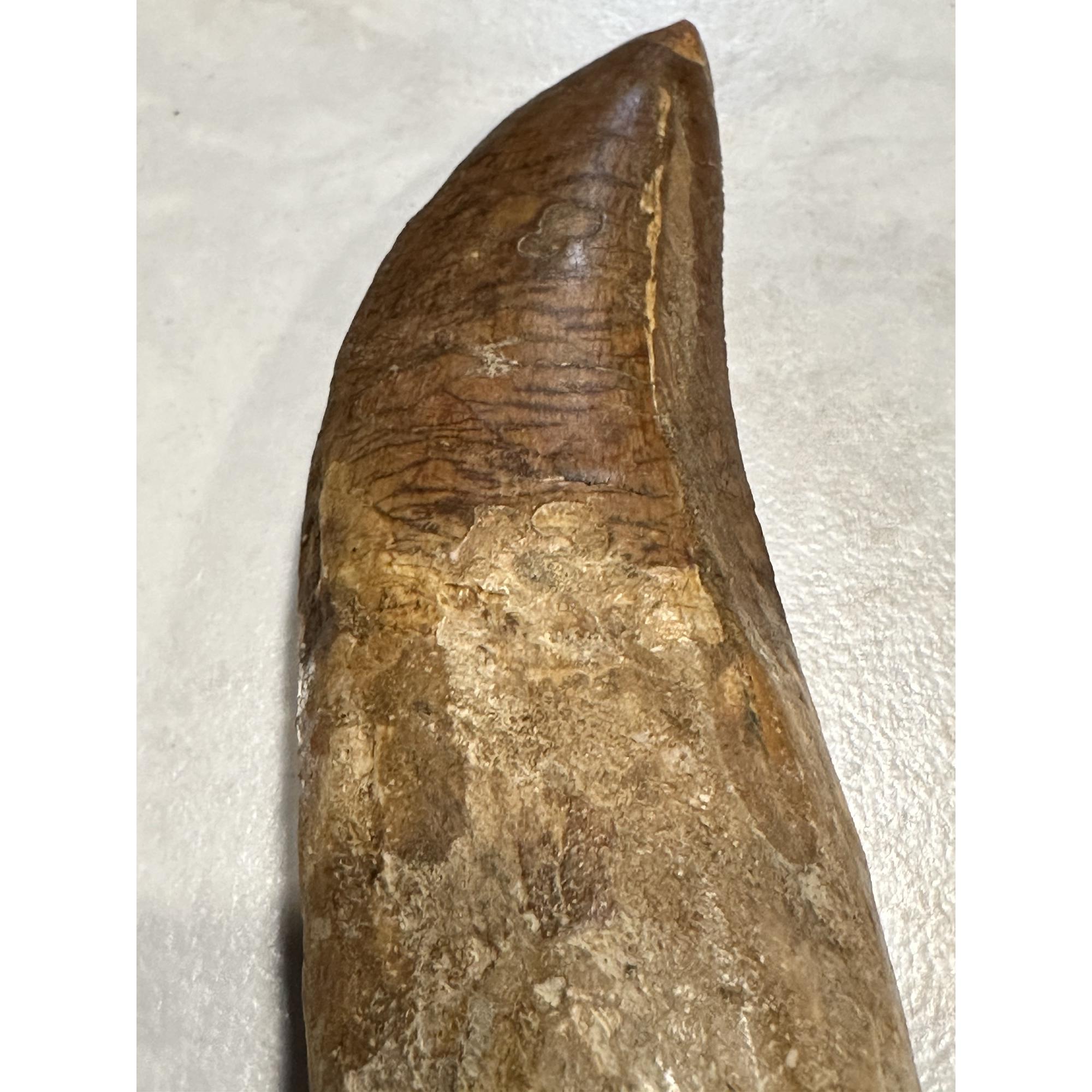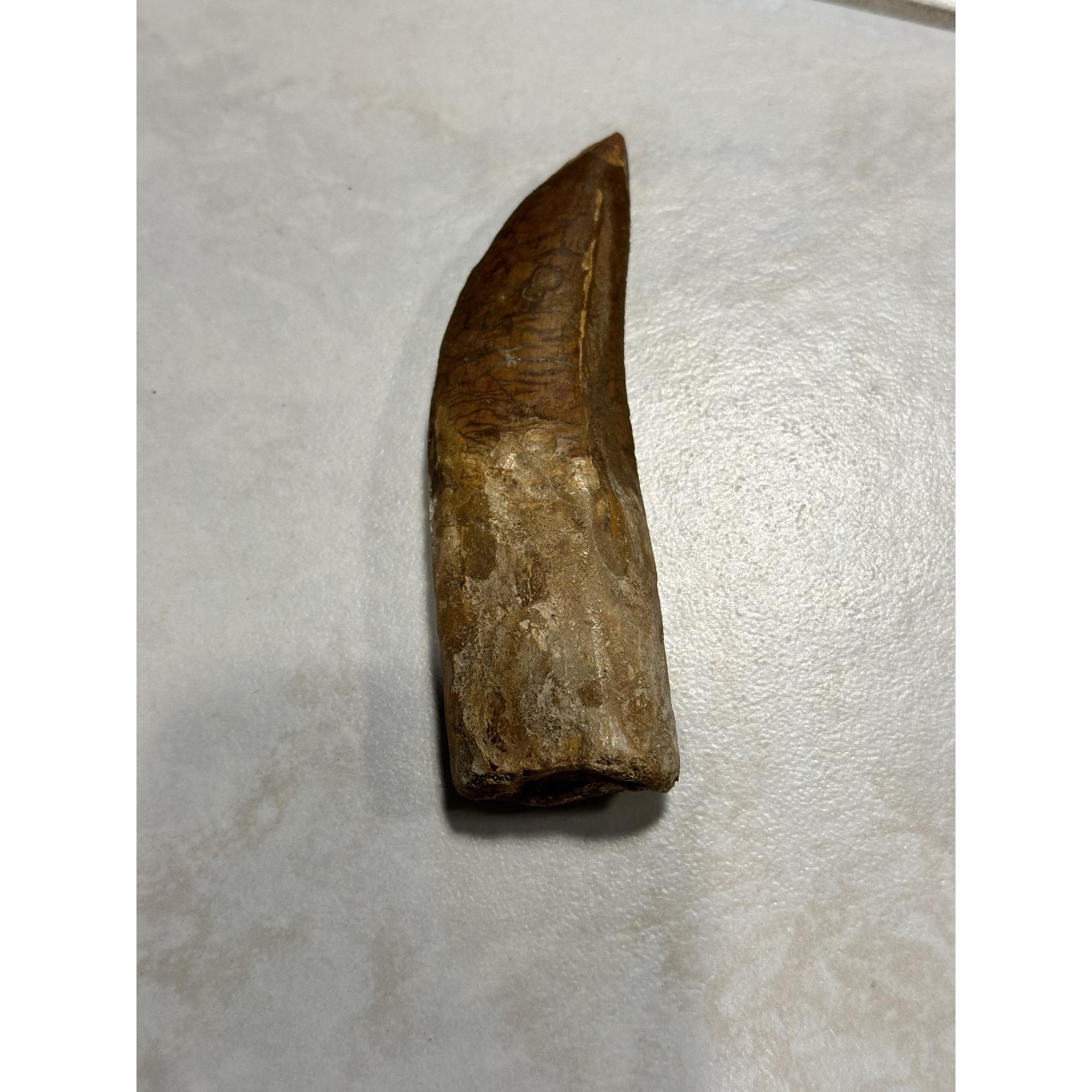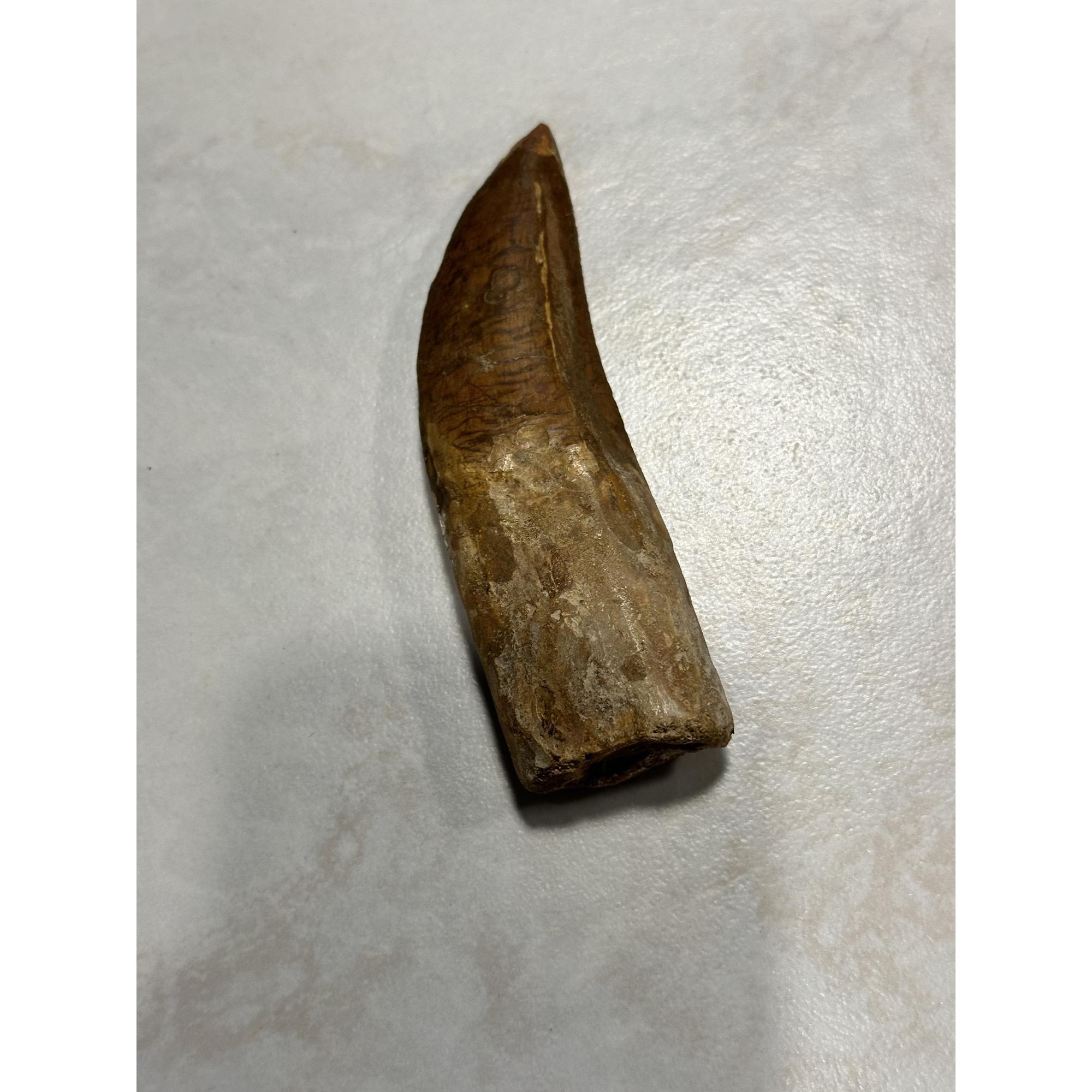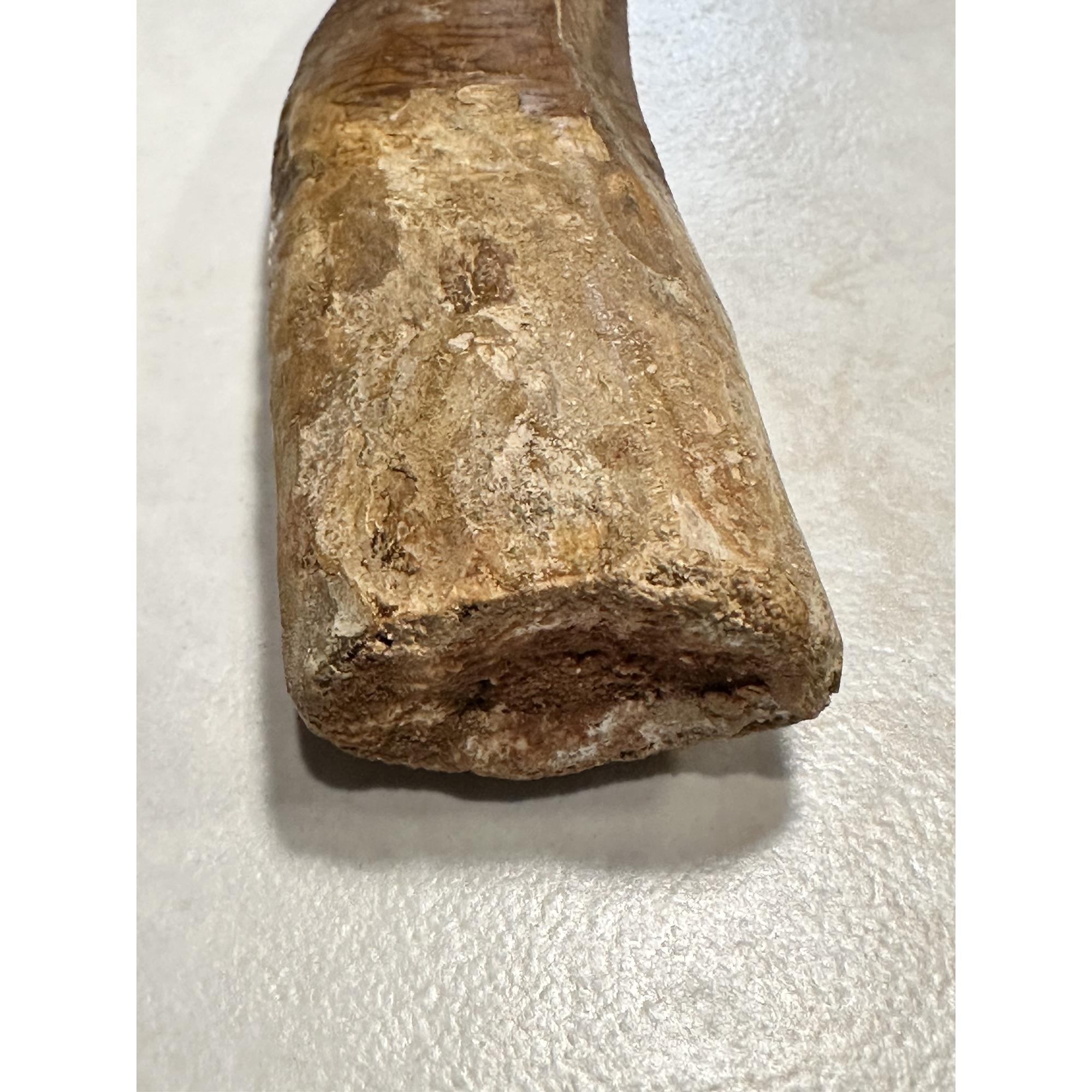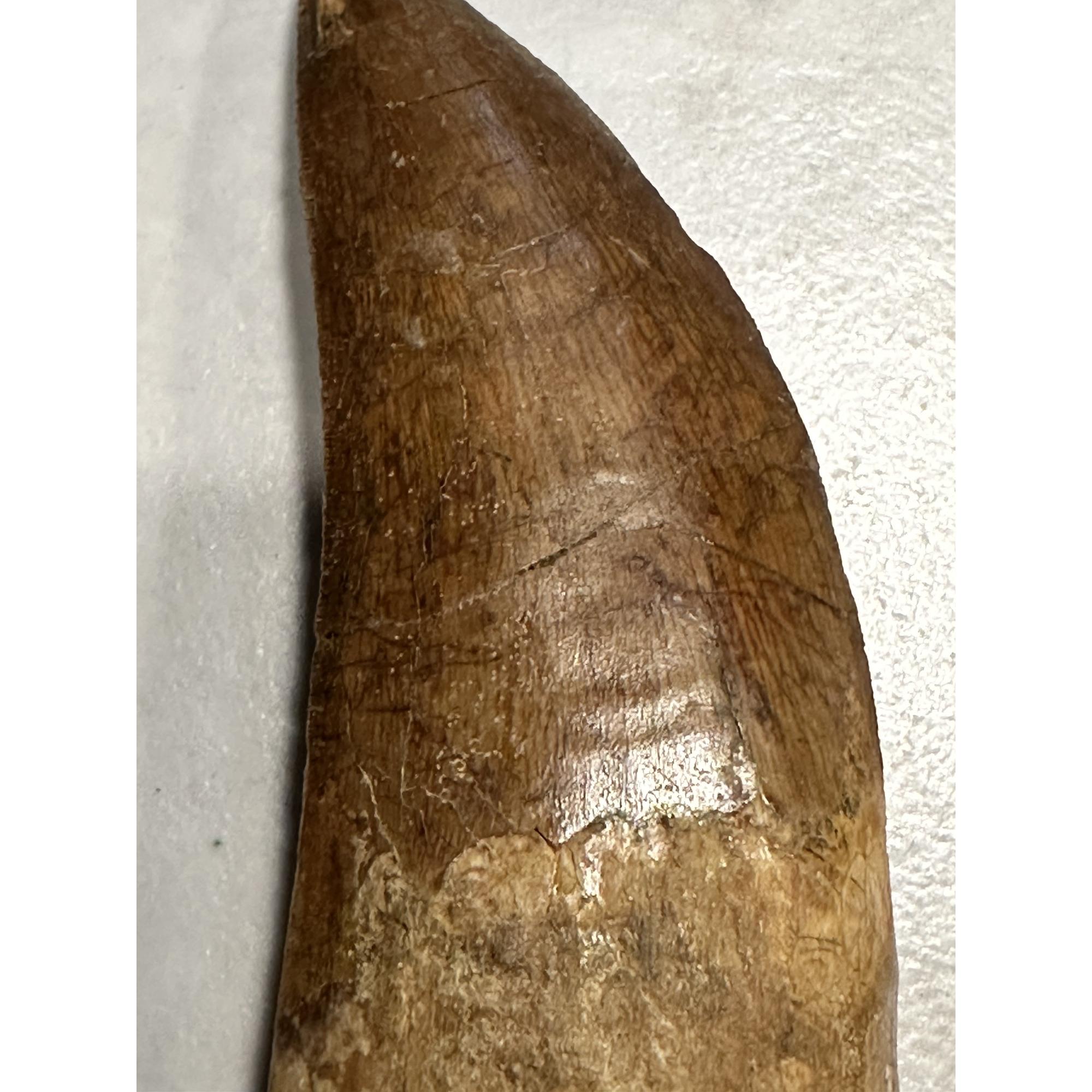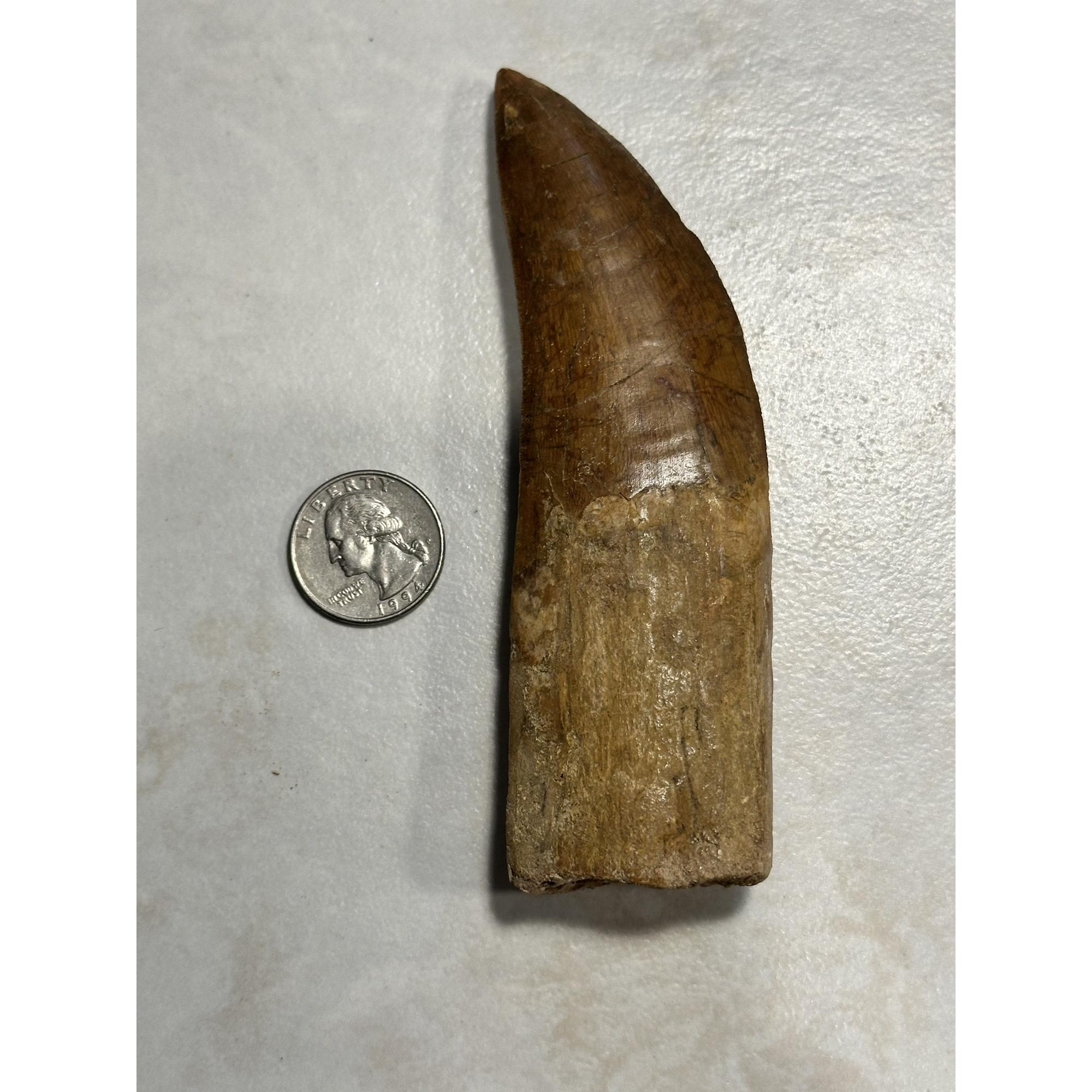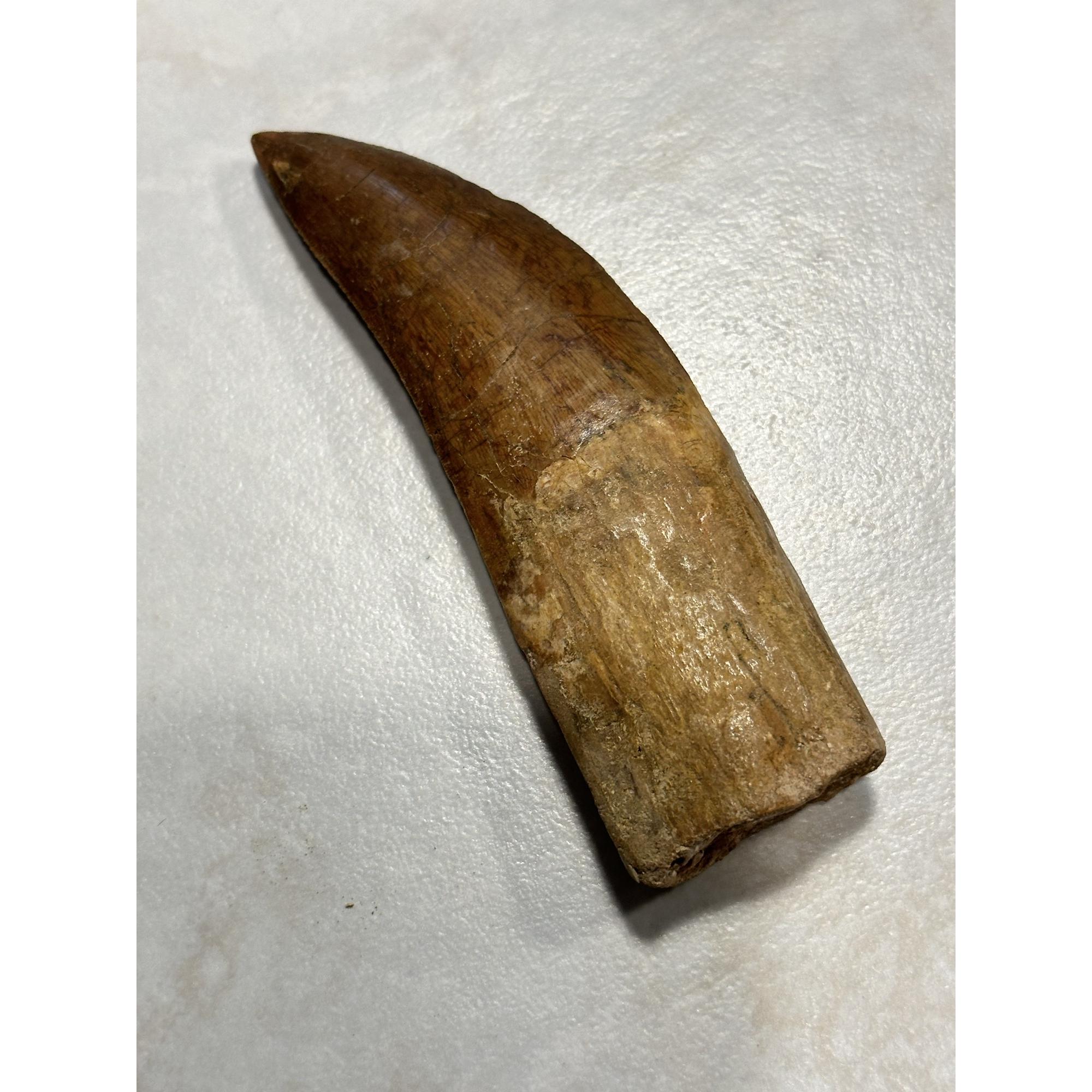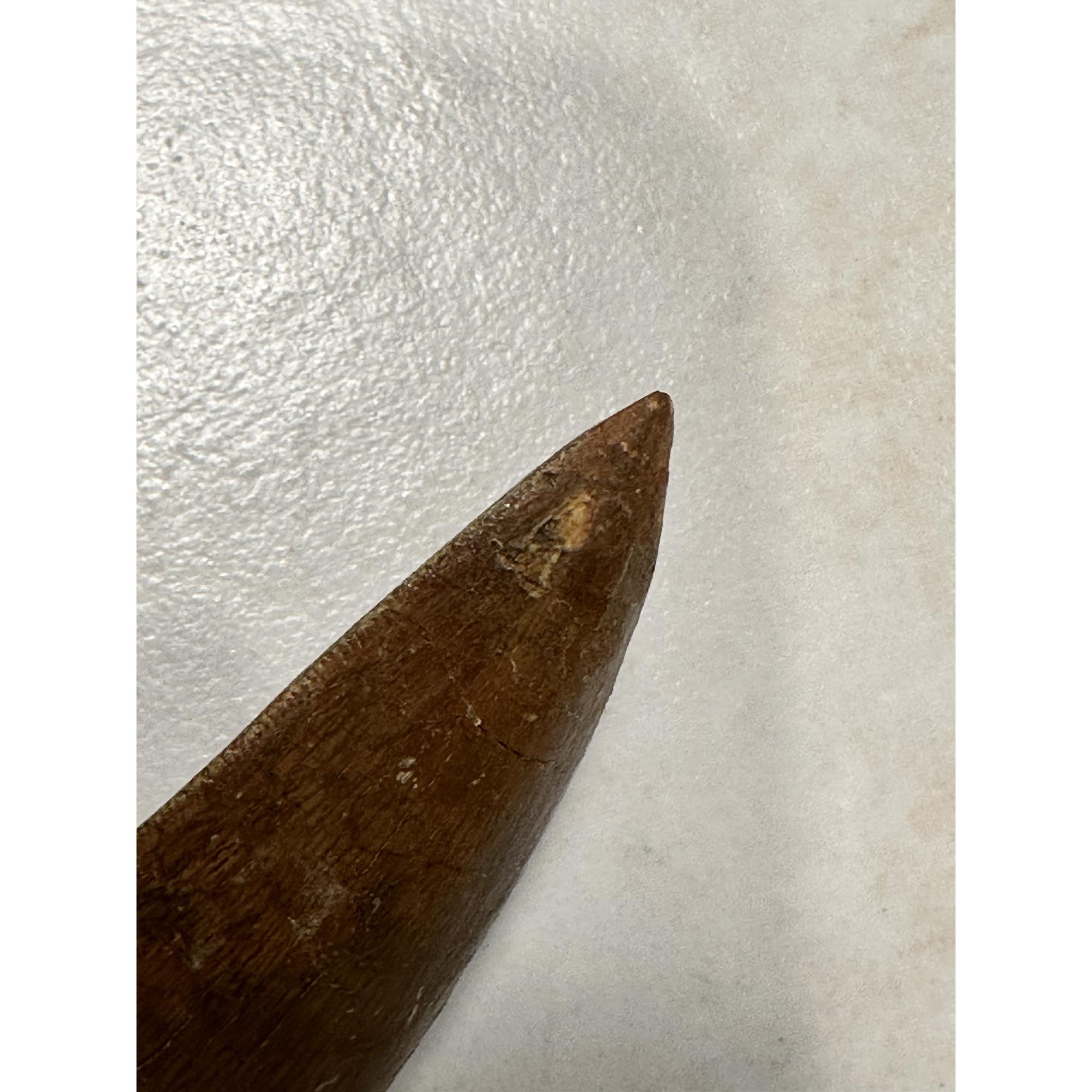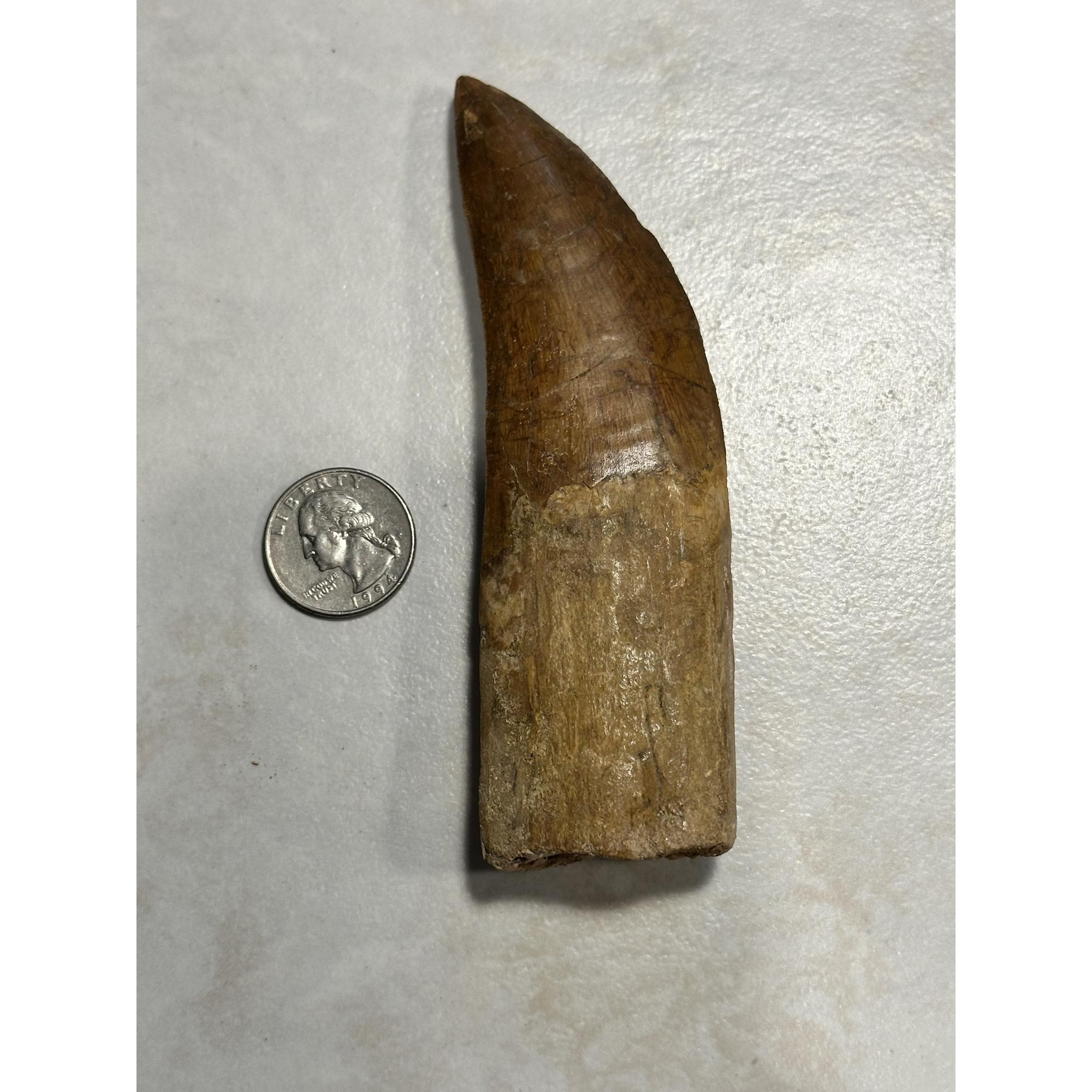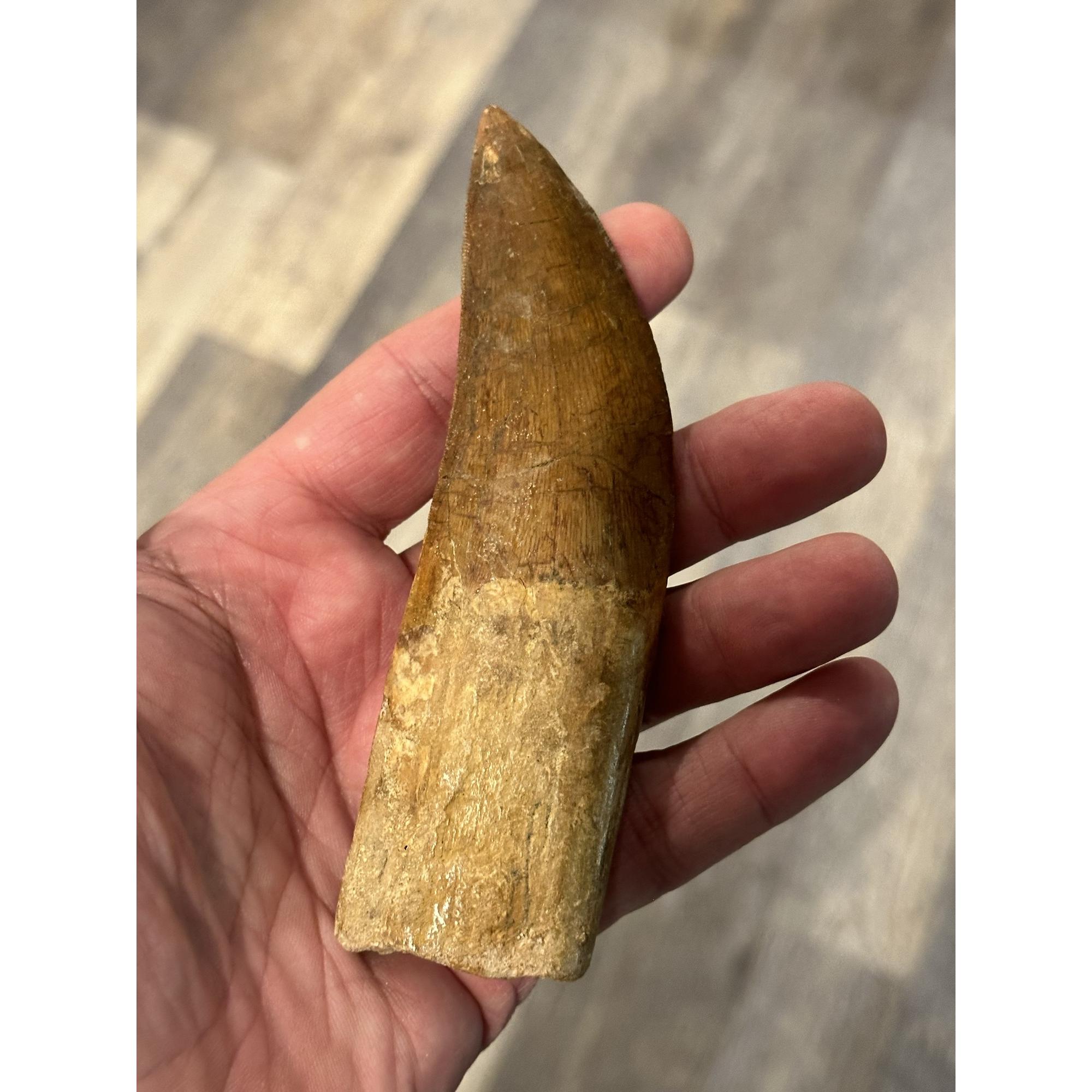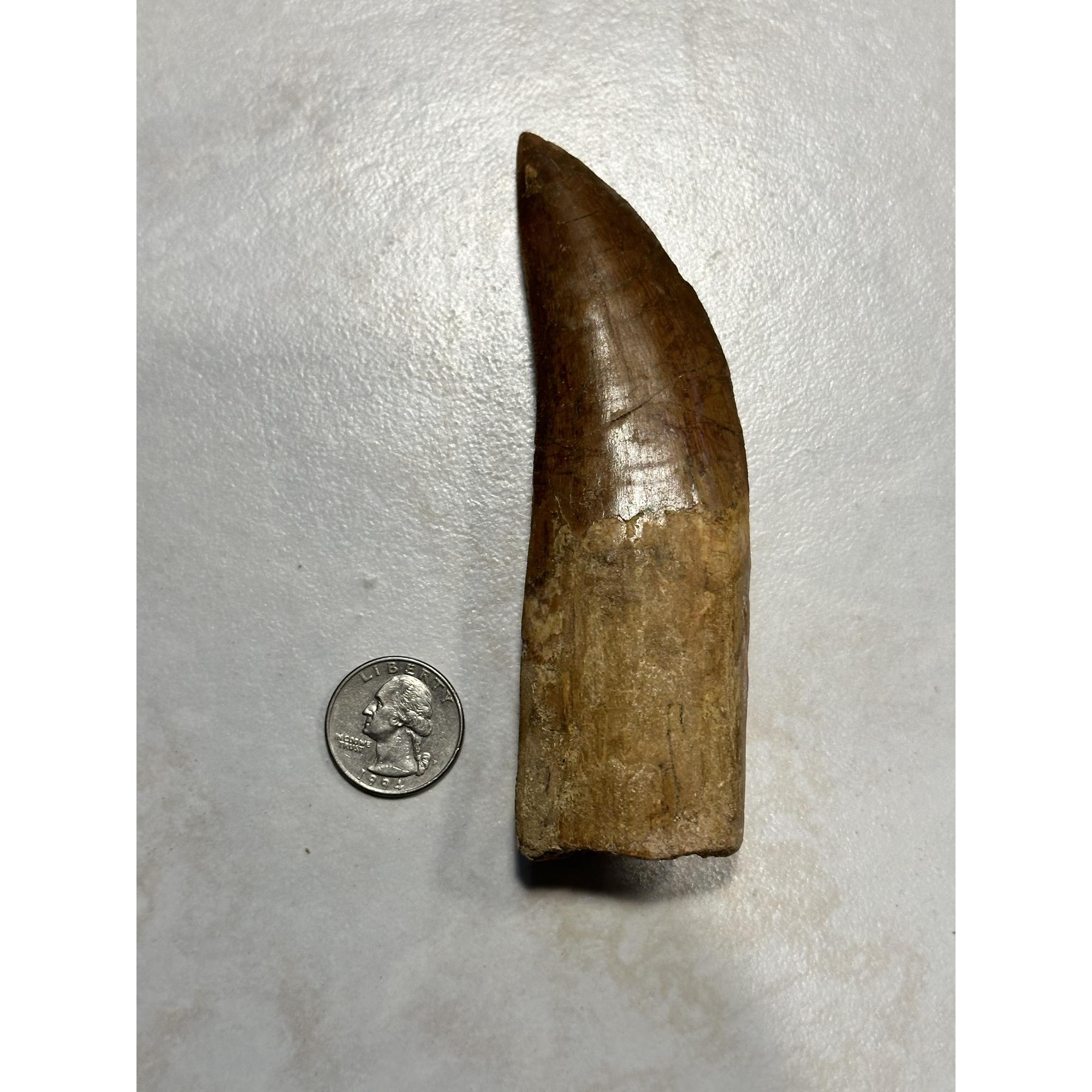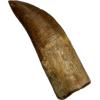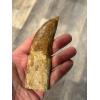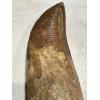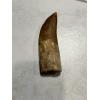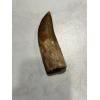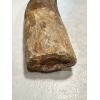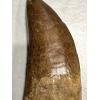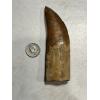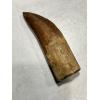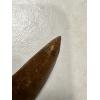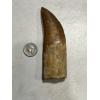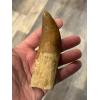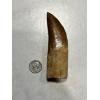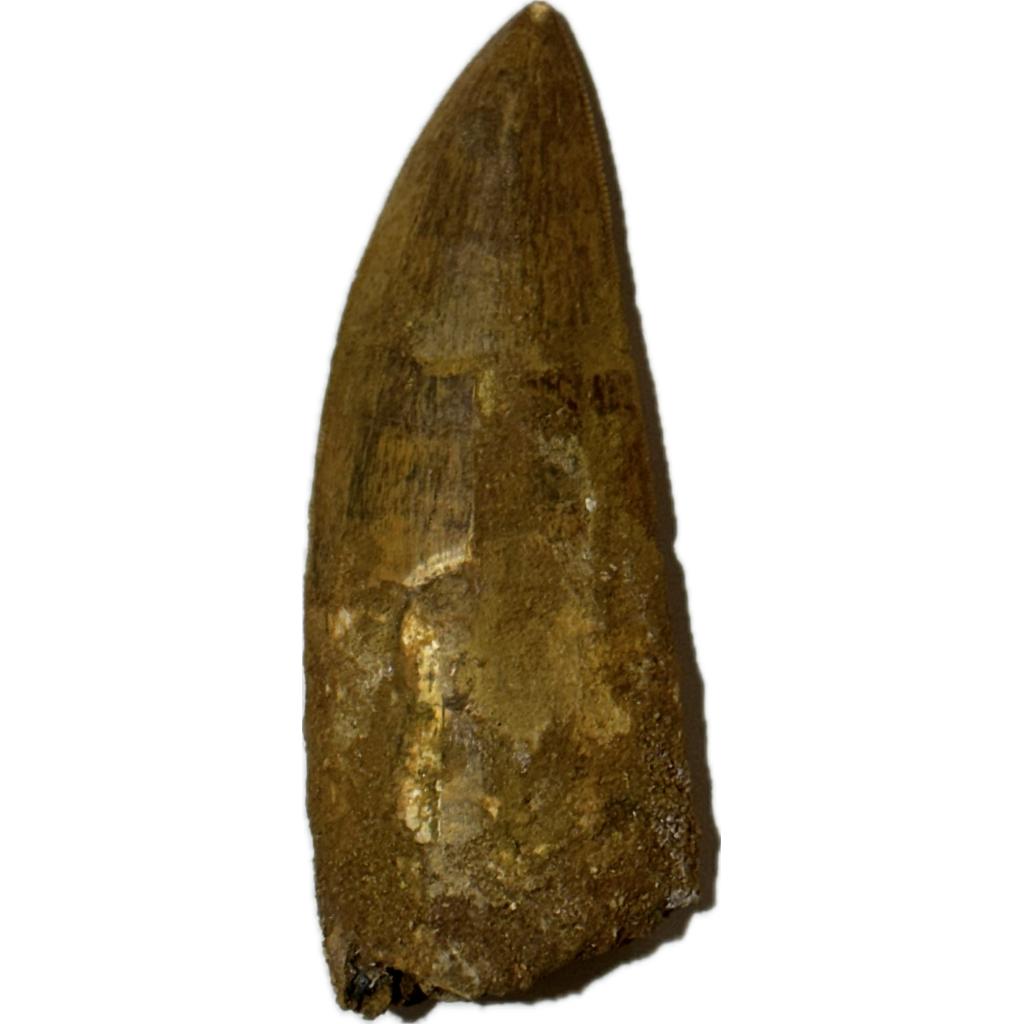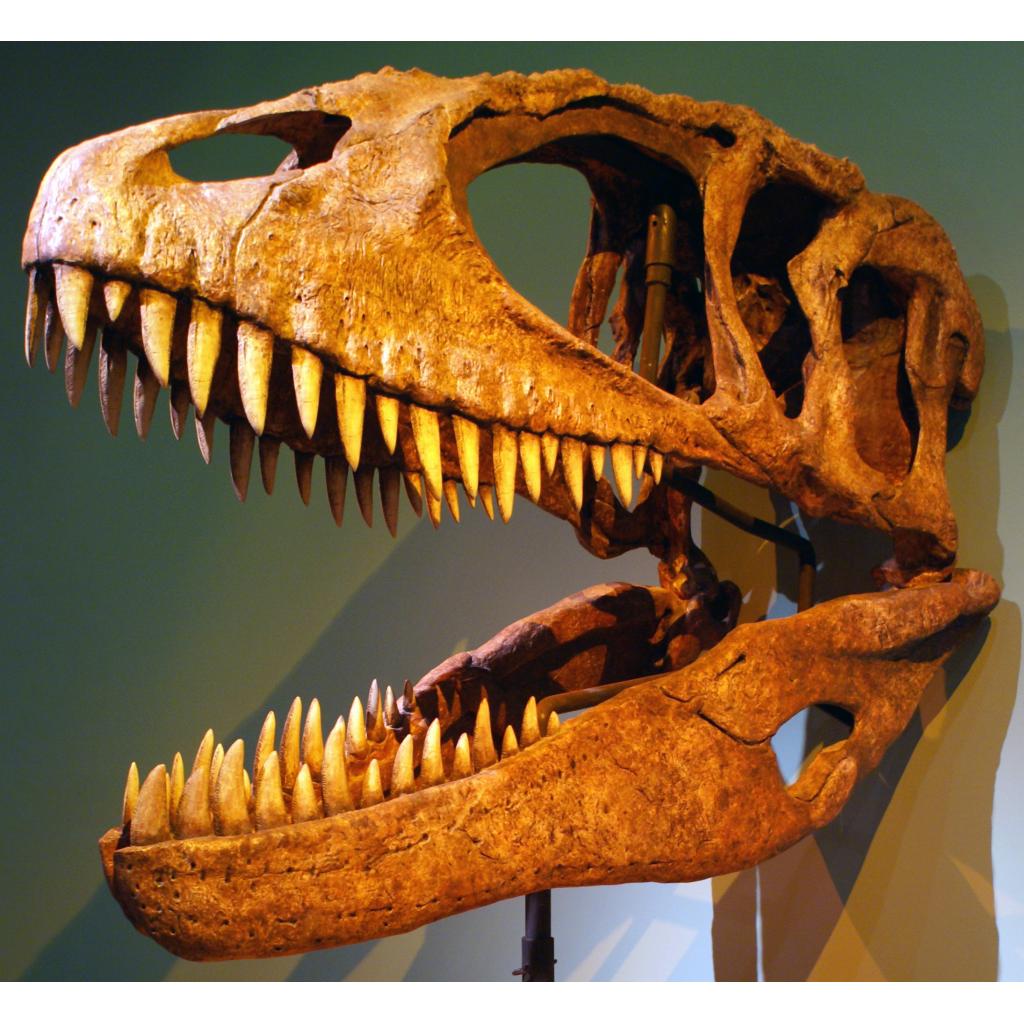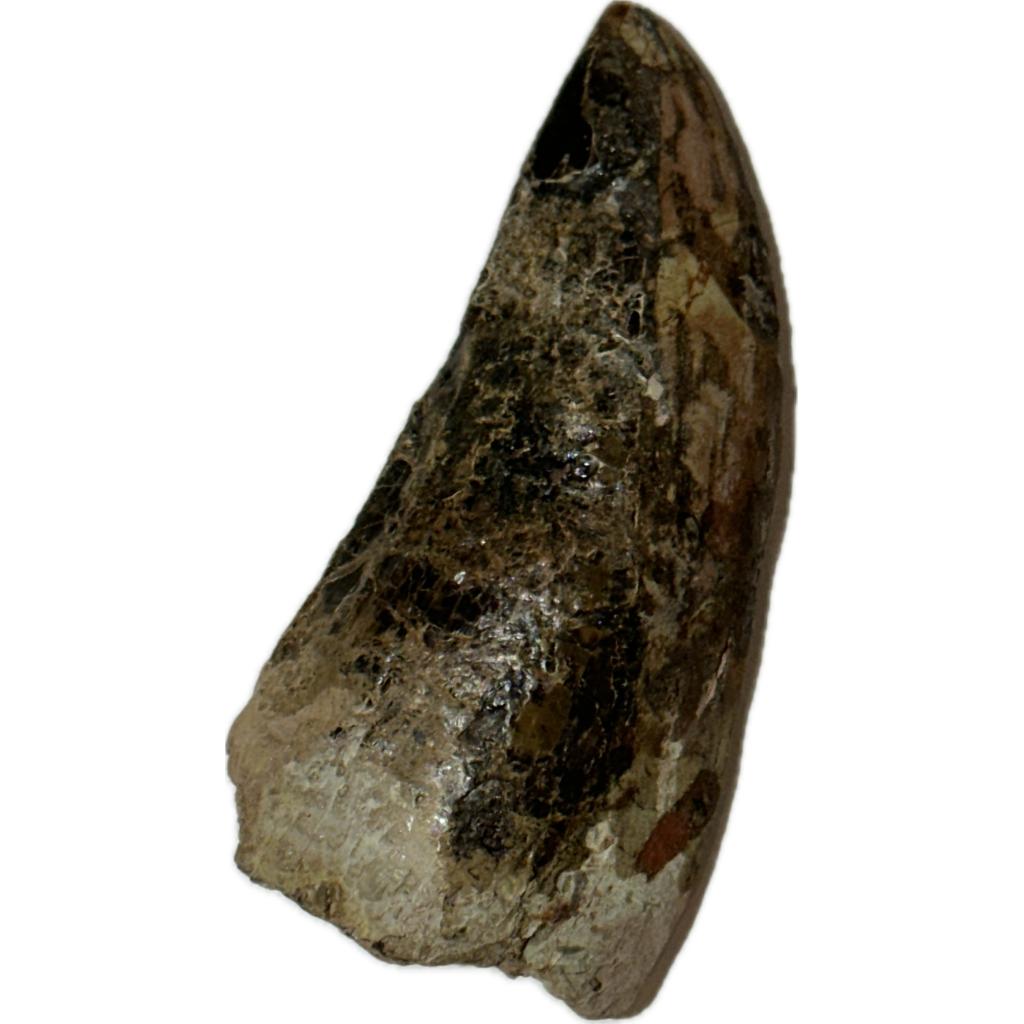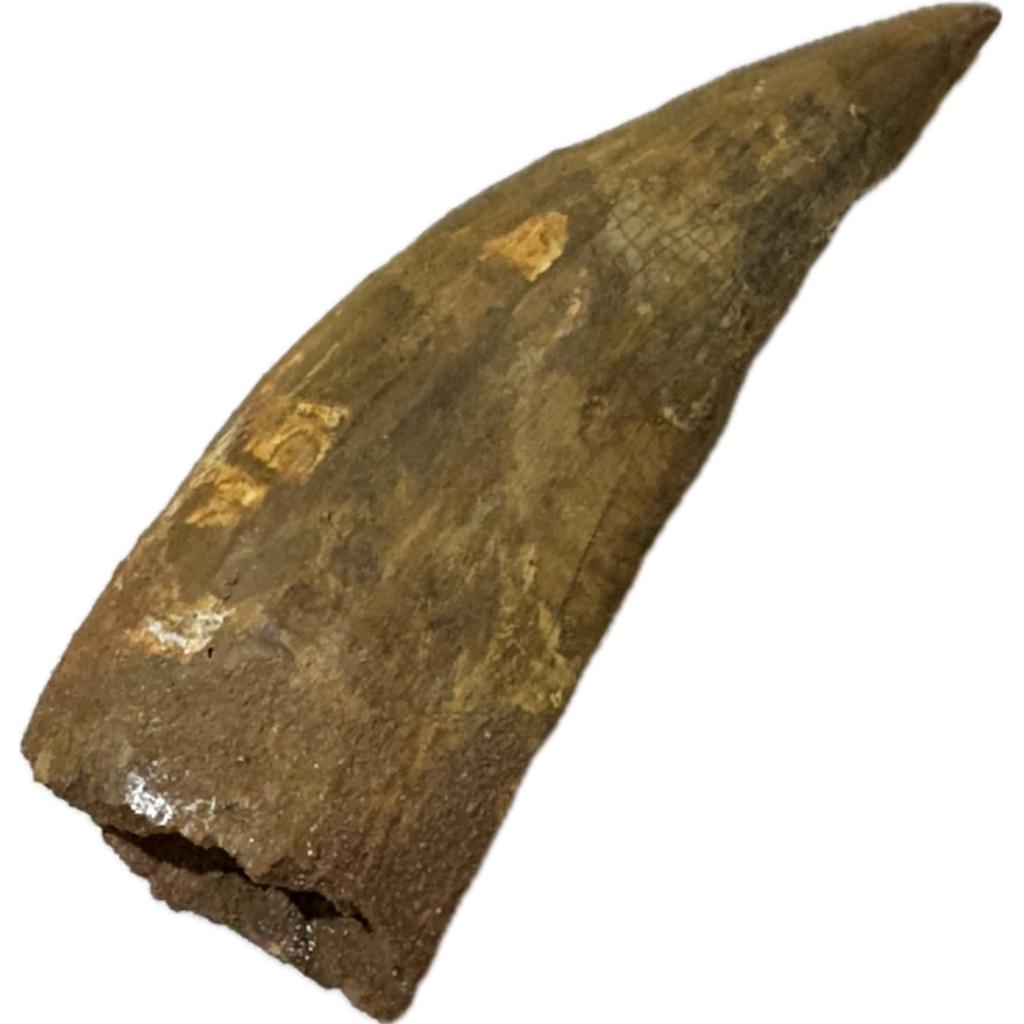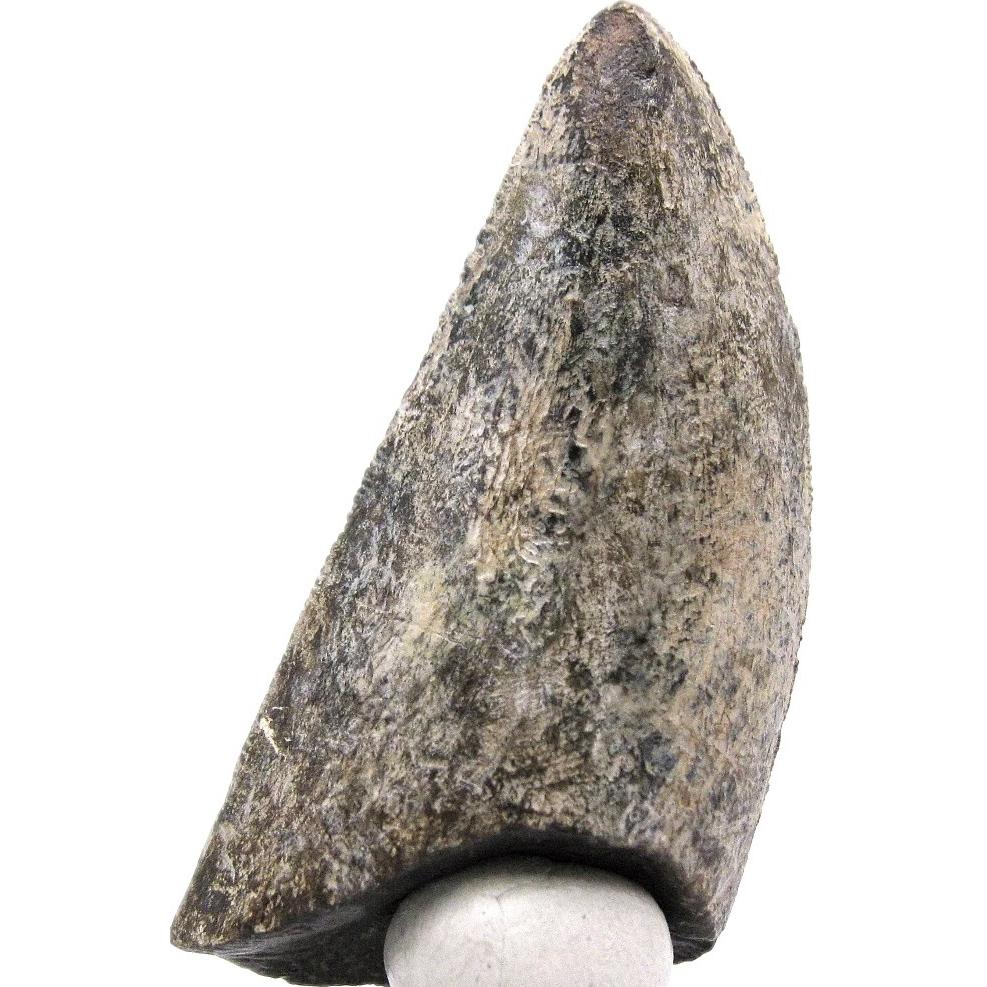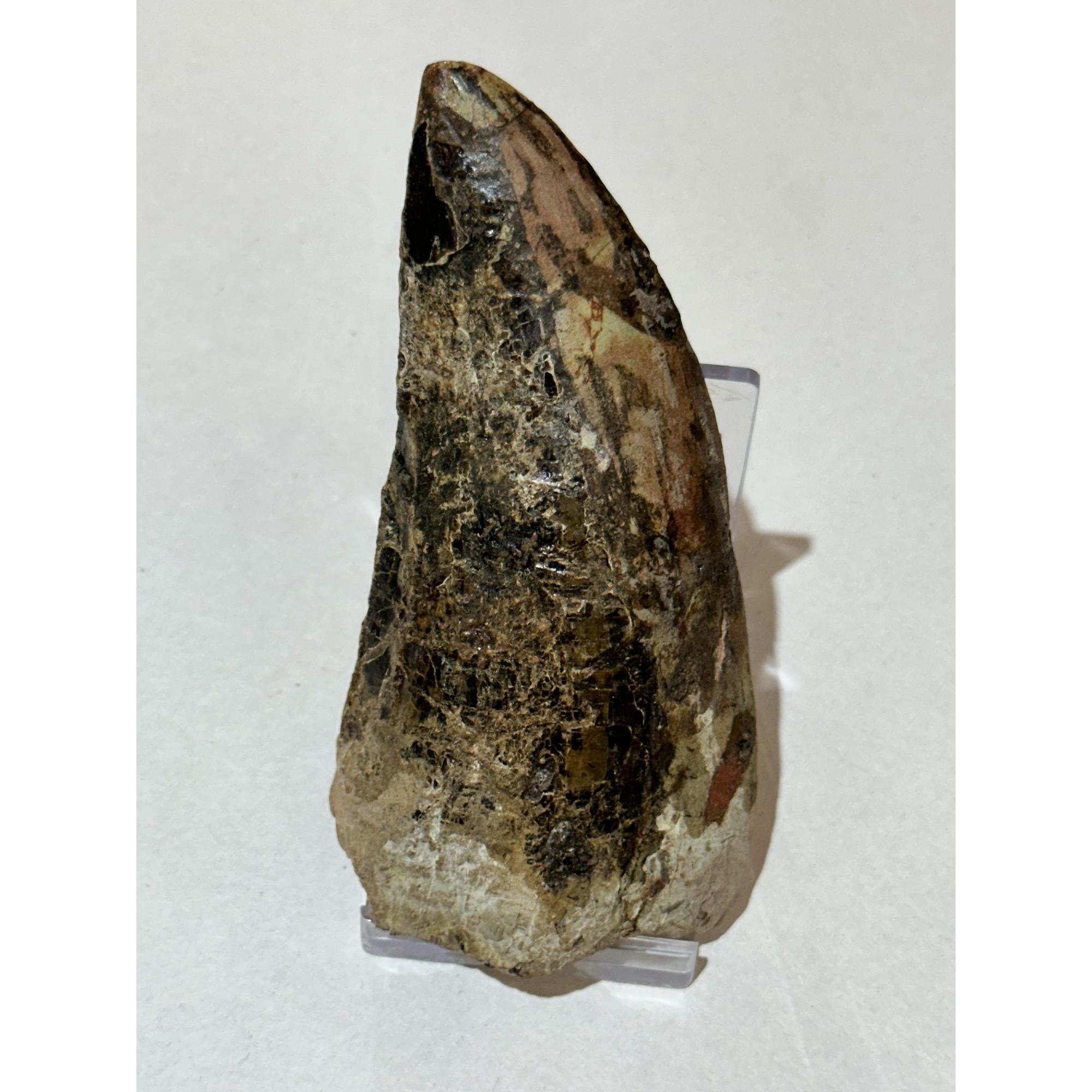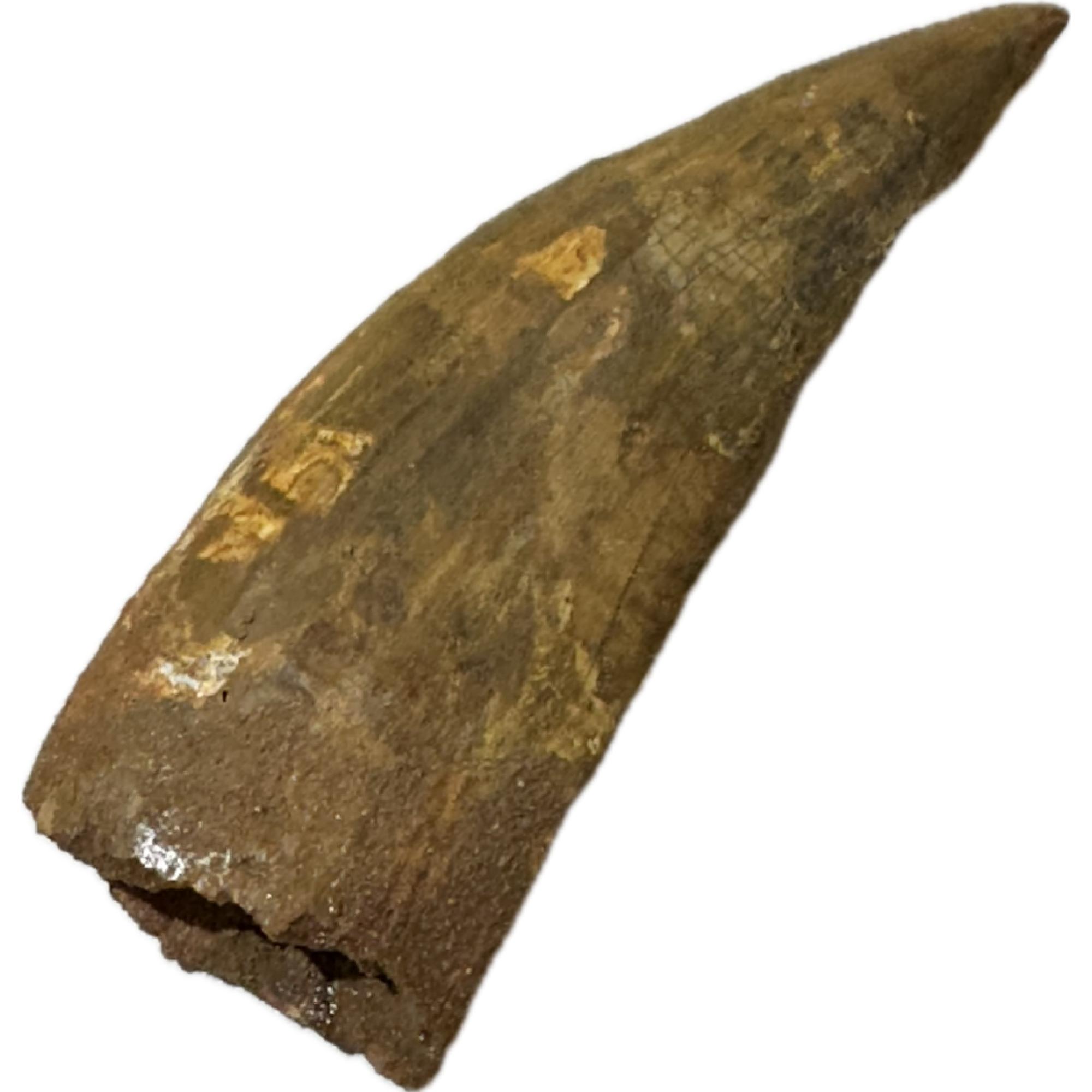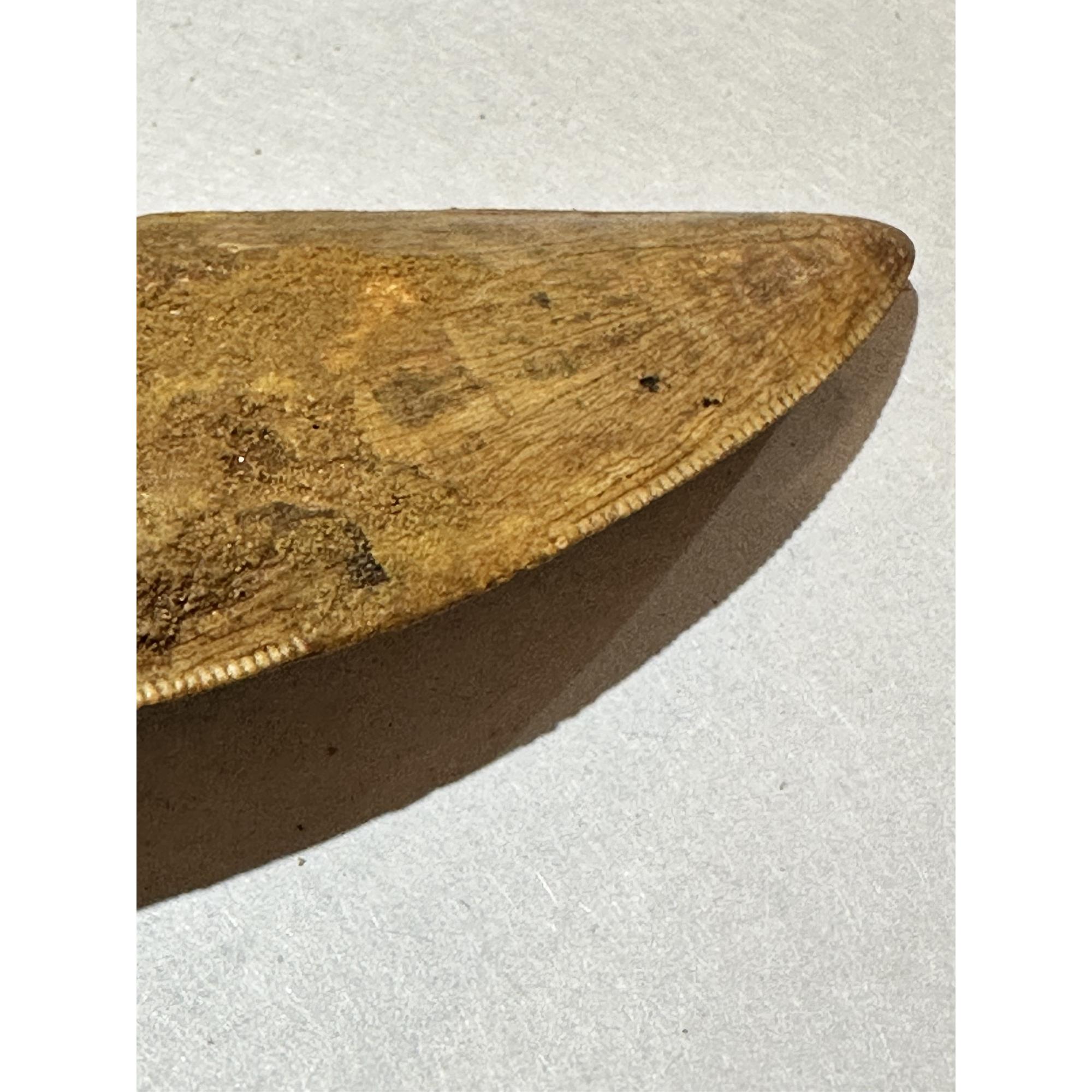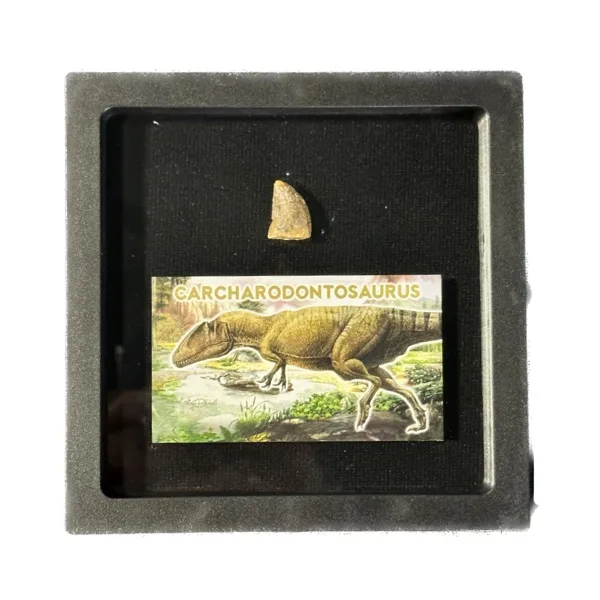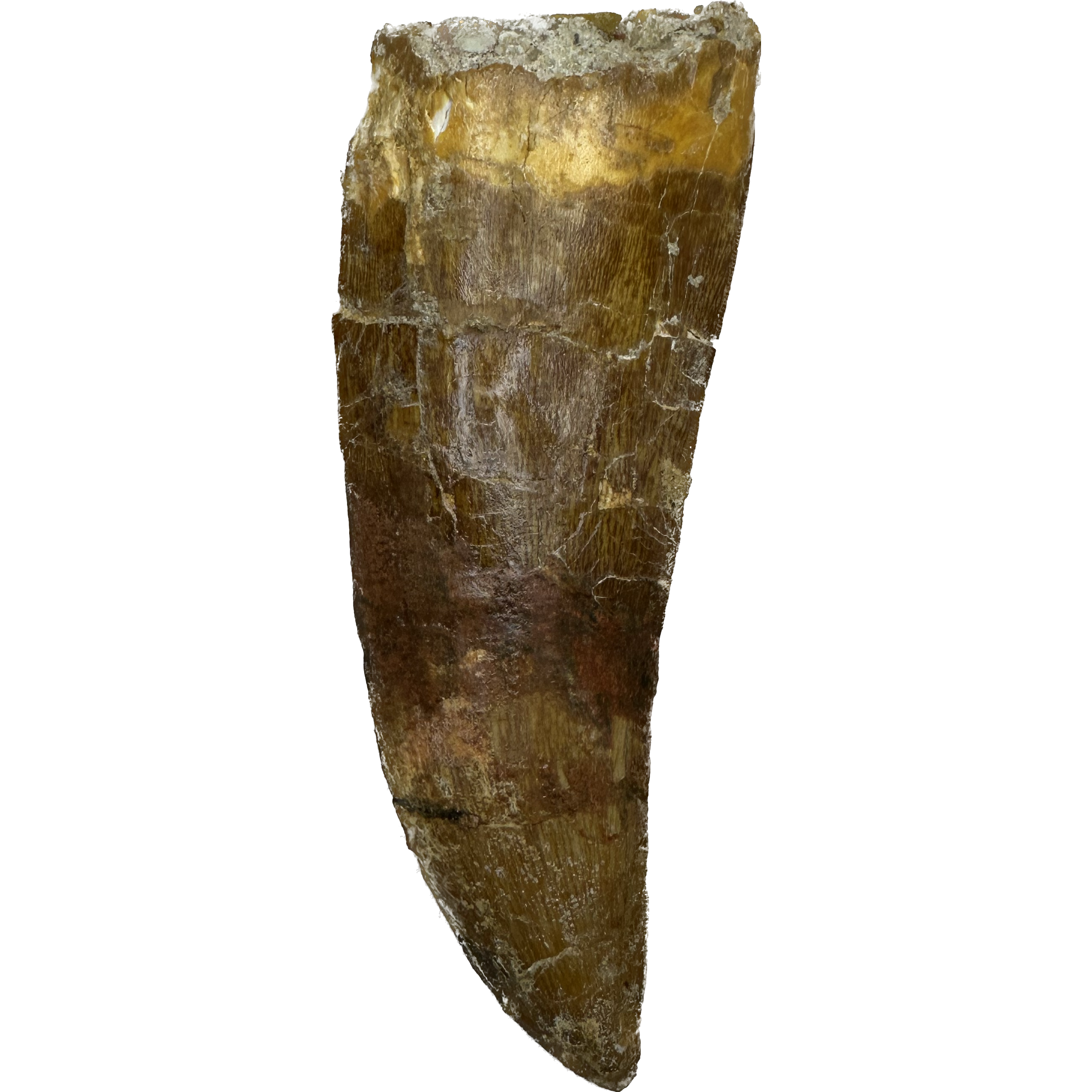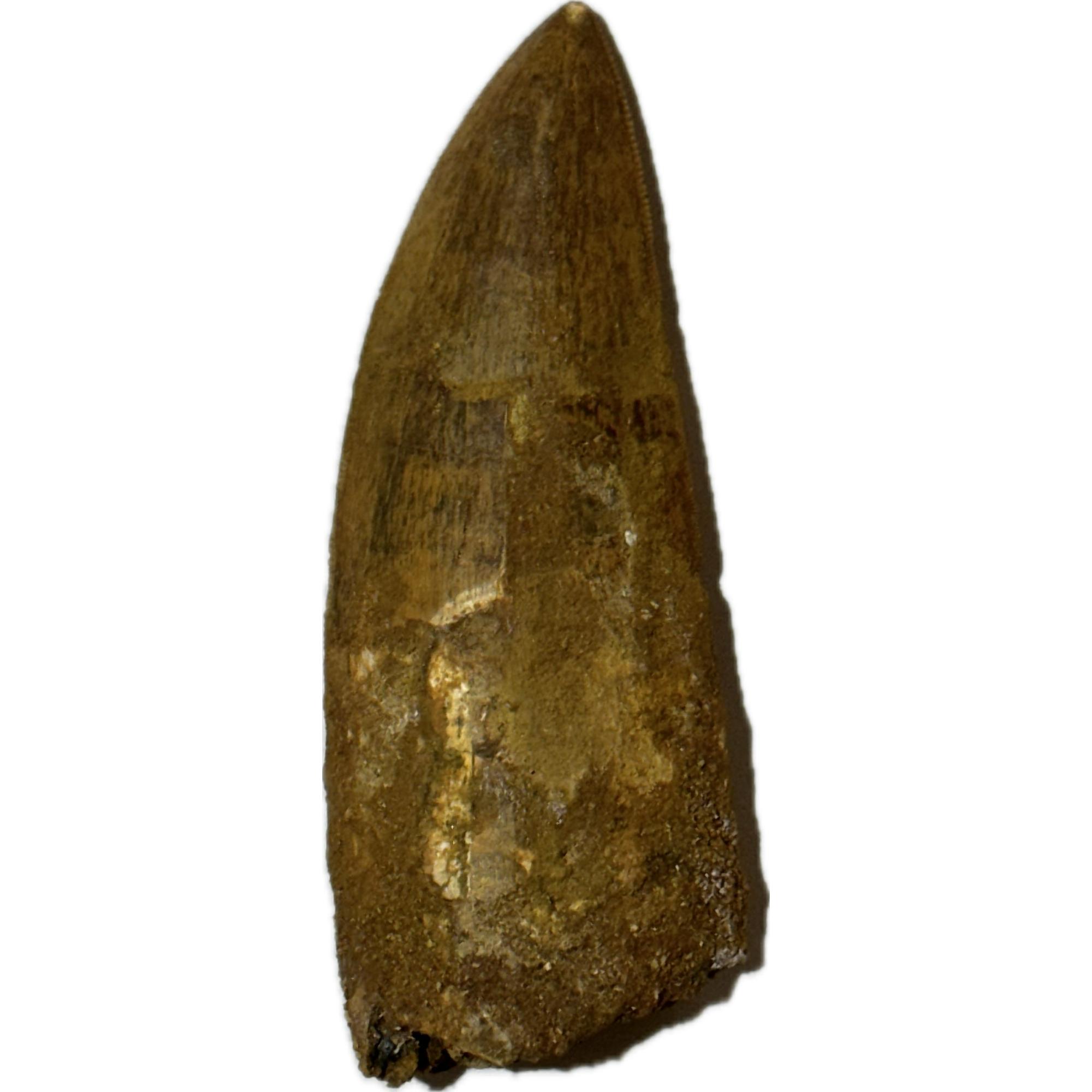Carcharodontosaurus, a genus of large theropod dinosaur, existed around 100 million years ago during the mid-Cretaceous period. Its name, “shark-toothed lizard,” originates from the Greek words “karcharos” and “odontos,” denoting its sharp, jagged teeth akin to those of a shark.
Discovered in Egypt in 1924 by Ernst Stromer, initial fossils were unfortunately lost during World War II. However, subsequent findings in North Africa, including Morocco, Algeria, Tunisia, and Niger, have expanded our understanding of this dinosaur.
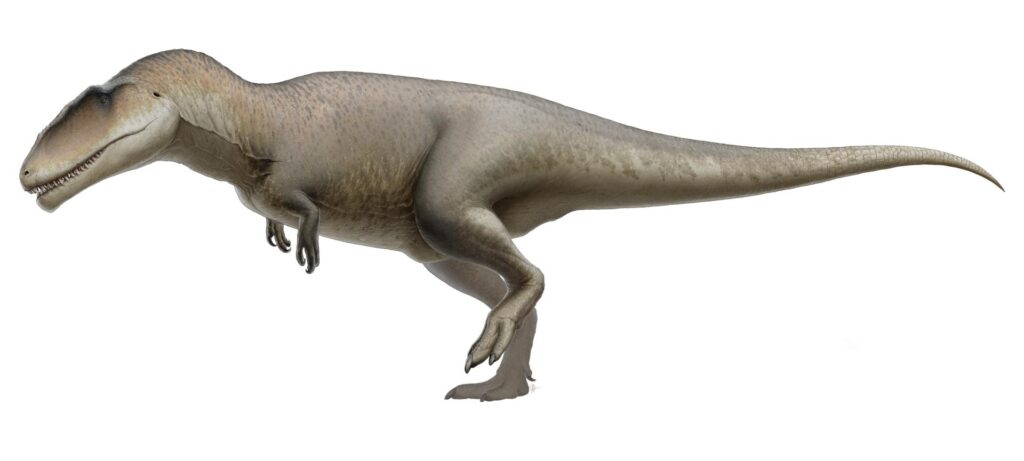
This apex predator boasted impressive dimensions, with estimates suggesting lengths of 11 to 13 meters and weights between 4 to 8 metric tons. Its skull, exceeding 1.5 meters, featured formidable teeth, some over 20 centimeters in length, finely serrated for efficient flesh tearing.
Carcharodontosaurus thrived in diverse habitats like semi-arid plains, forests, and river deltas across North Africa during the Cretaceous. As a carnivore, it preyed upon various herbivorous dinosaurs, likely employing ambush tactics akin to modern big cats.
Although much of its behavior remains speculative, its large size and robust anatomy suggest dominance within its ecosystem. It likely competed with other large theropods such as Spinosaurus and Sarcosuchus for resources and territory.

Ultimately, Carcharodontosaurus, like its contemporaries, met extinction around 66 million years ago, possibly due to environmental upheavals like volcanic activity, asteroid impacts, and climate change. Despite its demise, its fossils offer invaluable insights into the diversity and evolution of large theropod dinosaurs during the Cretaceous.
In scientific circles, Carcharodontosaurus holds significance for understanding ancient ecosystems and the roles of apex predators. Its unique features, including its massive size and distinctive teeth, contribute to unraveling the mysteries of prehistoric life and evolution.
T-Rex vs Carcharodontosaurus
Carcharodontosaurus and Tyrannosaurus rex (T. rex) are two iconic dinosaurs from the Mesozoic era, both belonging to the order Saurischia and the suborder Theropoda. Despite some similarities in their classification, they exhibit significant differences in their anatomical features, ecological roles, and evolutionary histories.
One of the most notable differences between Carcharodontosaurus and T. rex lies in their size and proportions. Carcharodontosaurus, although a large predator in its own right, was generally longer and leaner compared to the robust build of T. rex. While Carcharodontosaurus reached lengths of around 11 to 13 meters (36 to 43 feet), T. rex typically measured between 12 to 13 meters (40 to 43 feet) in length. However, T. rex was heavier, with estimates suggesting weights of up to 9 metric tons (about 10 short tons), compared to the 4 to 8 metric tons of Carcharodontosaurus.
Another key difference lies in their cranial morphology. Carcharodontosaurus is characterized by its elongated skull, which was narrower and more elongated compared to the robust skull of T. rex. Additionally, Carcharodontosaurus possessed large, blade-like teeth with fine serrations, resembling those of a shark, whereas T. rex had robust, conical teeth designed for crushing bone and tearing flesh.
Ecologically, Carcharodontosaurus and T. rex occupied different geographic regions and likely had different hunting strategies. Carcharodontosaurus lived in North Africa during the mid-Cretaceous period, while T. rex inhabited western North America during the late Cretaceous period. Carcharodontosaurus likely preyed on large herbivorous dinosaurs like sauropods and ornithopods, employing ambush tactics and possibly hunting in packs. On the other hand, T. rex is thought to have been an apex predator in its ecosystem, preying on a variety of herbivorous dinosaurs such as hadrosaurs and ceratopsians, potentially using its size and strength to dominate other predators and scavengers.
Evolutionarily, Carcharodontosaurus and T. rex belong to different lineages within the theropod clade. Carcharodontosaurus is classified as a carcharodontosaurid, a group of large theropods characterized by their serrated teeth and elongated skulls. T. rex, on the other hand, is a member of the tyrannosaurid family, known for their robust build, massive skulls, and powerful jaws. Despite these differences, both groups of dinosaurs evolved to become apex predators in their respective ecosystems, demonstrating convergent evolution in their adaptations for hunting large prey.
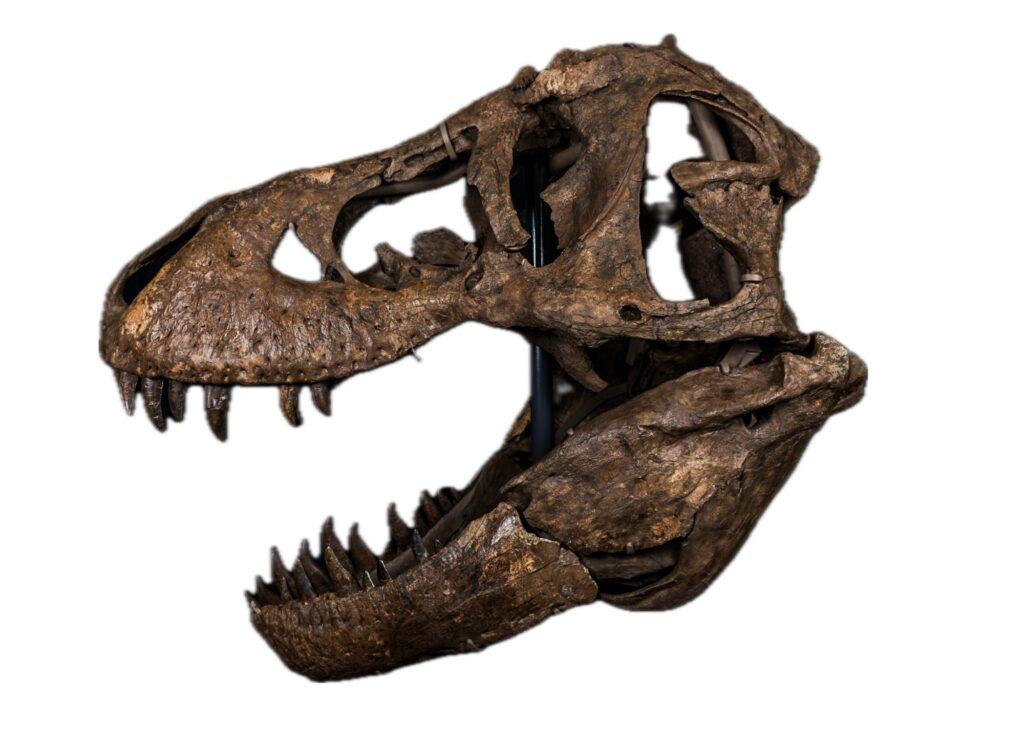
Fossilized Carcharodontosaurus teeth offer fascinating insights into the life and ecology of this ancient predator. These teeth are renowned for their distinctive serrated edges, resembling those of a shark, which facilitated efficient slicing through flesh. Typically, Carcharodontosaurus teeth are large, measuring over 20 centimeters in length, and are characterized by their robust construction and sharp, pointed tips.
Carcharodontosaurus teeth are commonly found in the same regions where fossils of the dinosaur itself have been discovered, primarily in North Africa, including countries like Morocco, Algeria, Tunisia, and Niger. These teeth are often recovered from sedimentary deposits, such as those formed in ancient river deltas or floodplains, where the remains of dinosaurs and other prehistoric organisms were preserved over millions of years.
Studying fossil Carcharodontosaurus teeth provides valuable information about the dietary habits, feeding behavior, and ecological roles of these ancient predators. By analyzing the wear patterns and microscopic structures of the teeth, researchers can infer the types of prey Carcharodontosaurus hunted and the techniques it employed during feeding. Additionally, comparing the teeth to those of other theropod dinosaurs allows scientists to better understand the diversity and evolution of predatory dinosaurs during the Cretaceous period.
Due to their scientific significance and aesthetic appeal, fossil Carcharodontosaurus teeth are highly sought after by collectors and enthusiasts alike. However, it’s essential to ensure the authenticity and legality of these specimens, as unethical practices such as illegal excavation and trafficking of fossils can harm scientific research and conservation efforts. By obtaining fossils through reputable sources and adhering to ethical guidelines, collectors can contribute to the preservation and study of Earth’s ancient history.
Prehistoric 101 (Learn about fossils, minerals, and meteorites)
Carcharodontosaurus: Learn More
Learn about Dinosaurs

